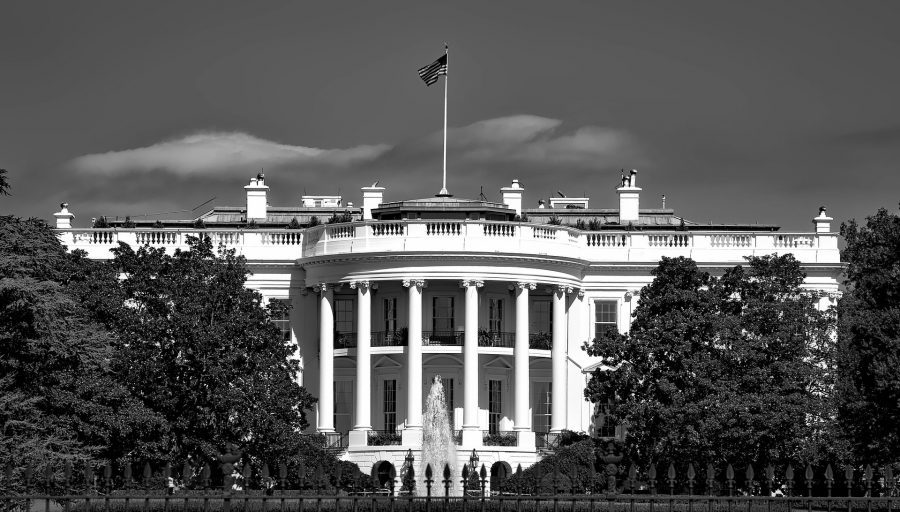Fed Chair Powell will speak at 10 PM EST tonight on “Monetary Policy Normalization and Review” at Stanford University, CA Watch it live here.
President and Mrs. Trump will depart the White House at 9:20 AM EST this morning for Fort Benning, GA, arriving at 11:35 AM EST. They will spend the afternoon viewing tornado damage in Alabama. Then they will depart for the weekend to Mar-a-Lago, arriving at 4:55 PM EST. At 6:30 PM, the President will do a fundraiser with a 7:30 PM speech.
USTR Lighthizer will testify on March 12 before the Senate Finance Committee on the WTO outlook. He’ll also be bombarded with questions about negotiations with China and with the EU. I’ll forward a transcript as soon as it become available.
President Trump’s FY20 Budget will be posted here next Monday morning. Congress is very unlikely to adopt its 5% nondefense spending cuts. A defense increase to $750 b. may be another matter.
Treasury Secretary Mnuchin will testify on March 14 before the House Ways and Means Committee on President Trump’s FY20 Budget. Mr. Mnuchin will probably spend a lot of his time responding to questions about turning over President Trump’s personal and business tax returns.
Acting Office of Management and Budget Director Russell Vought will testify before the House Budget Committee on March 12 on President Trump’s FY20 Budget. There’s little chance Mr. Trump’s FY20 Budget, or even parts of it, will pass either house of Congress.
“U.S.-China Trade Deal Isn’t Imminent So No Summit Date Set, Envoy Says.” This morning’s Wall Street Journal article leads with:
BEIJING—The U.S. and China have yet to set a date for a summit to resolve their trade dispute, the U.S. ambassador to China said Friday, as neither side feels an agreement is imminent.
“A date hasn’t been finalized” for a meeting between President Trump and Chinese leader Xi Jinping, Terry Branstad, the U.S. envoy to Beijing, said in an interview with The Wall Street Journal. He said preparations for such a meeting aren’t yet under way either.
Mr. Branstad said negotiators need to further narrow the gap in their positions, including on enforcement of an eventual deal, before summit arrangements are made.
“Both sides agree that there has to be significant progress, meaning a feeling that they’re very close before that happens,” Mr. Branstad said in his office at the U.S. embassy in Beijing. “We’re not there yet. But we’re closer than we’ve been for a very long time.”
Mr. Branstad’s remarks add to growing doubt that Washington and Beijing can speedily resolve their yearlong trade battle that has rattled global markets and businesses.
Tax Refunds totaled $142.395 b. through March 1 versus $147.577 b. during the comparable period last year, down 3.5%. Returns with refunds processed so far total 46.416 m. versus 48.452 m. last year, down 4.2%. The average refund has been $3,068 so far versus $3,046, up 0.7%. Check out all of the filing season data through March 1 here.
$227 b. deficit estimated by CBO for the 2 PM March 22 Monthly Treasury Statement. At 2 PM yesterday, the Congressional Budget Office estimated February’s deficit was $227 b. versus $215 b. in February, 2018, receipts of $171 b. versus $158 b., and outlays of $398 b, versus $371 b.
The federal government incurred a deficit of $227 billion in February 2019, CBO estimates—$12 billion more than the deficit in February 2018.
CBO estimates that receipts in February 2019 totaled $171 billion—$16 billion (or 10 percent) more than those in the same month last year. Withholding of individual income and payroll taxes increased by $10 billion (or 5 percent), thus increasing receipts. Individual income tax refunds declined by $10 billion (or 13 percent), further boosting net receipts. (However, the share of total refunds paid in February varies from year to year.) Remittances from the Federal Reserve decreased by $5 billion, or 62 percent. Last February’s remittances were boosted by an additional onetime remittance of $2.5 billion as a result of provisions of the Bipartisan Budget Act of 2018.
Total spending in February 2019 was $398 billion, CBO estimates—$27 billion (or 7 percent) more than the sum in February 2018.
According to CBO’s estimates, the largest changes in outlays were as follows:
■ Outlays for the refundable portion of the earned income and child tax credits increased by$6 billion (or 13 percent).
■ Spending for military programs of the Department of Defense rose by $6 billion (or 12 percent).
■ Social Security benefit payments rose by $5 billion (or 6 percent).
■ Outlays for Medicare increased by $4 billion (or 8 percent).
Spending for other programs and activities increased or decreased by smaller amounts.
Actual Surplus in January 2019: $9 Billion
The Treasury Department reported a surplus of $9 billion for January. CBO did not publish a Monthly Budget Review for January 2019 because some data that CBO would have used to produce the report were unavailable as a result of the federal government’s partial shutdown from December 22, 2018, to January 25, 2019.
“Overseas Contingency Operations: Trends and Issues.” Yesterday’s 12-slide CRS, CBO, GAO presentation stated:
Since 2001, the Department of Defense (DoD) has regularly requested large appropriations to supplement its base-budget funding. Most of that nonbase funding has been designated for overseas contingency operations (OCO) that began after 9/11. CBO examined how DoD’s use of OCO funding has affected its spending.
Growth of Funding. Between 1970 and 2000, nonbase funding accounted for about 2 percent of DoD’s total spending. Since 2001, such funding has accounted for a much larger and persistent share of annual defense appropriations.
Amounts of Funding. Nonbase funding peaked at 28 percent of DoD’s budget in 2007 and 2008. From 2001 to 2018, it has averaged about $116 billion per year (in 2019 dollars), totaling about 20 percent of DoD’s total funding.
Funding for Enduring Activities. In CBO’s estimation, from 2006 to 2018, more than $50 billion in OCO funding per year (in 2019 dollars), on average, has gone toward the costs of enduring activities rather than the temporary costs of overseas operations. DoD’s most recent budget request indicates that, beginning in 2019, the department plans to increase the base budget to include most of that enduring funding in future years.
“More Evidence of Post-ACA Slowdown in Health Care Spending.” Yesterday’s Center for Budget and Policy Priorities blog by Paul Van de Water stated in its entirety:
New projections from the Medicare actuaries provide fresh evidence that the Affordable Care Act (ACA) has helped slow spending growth throughout the nation’s health care sector.
Under the actuaries’ updated projections of national health expenditures, both public and private health spending in 2019 will be substantially lower than what the actuaries projected in March 2010, just before the ACA’s enactment.
Medicaid shows the largest slowdown. In 2010, the Centers for Medicare & Medicaid Services (CMS) projected that Medicaid spending would reach $794 billion by 2019. Today, even with the ACA’s coverage expansions, CMS projects that Medicaid will spend just $623 billion this year or 21.5 percent less. (See figure.)
Medicare and private health insurance have also recorded large reductions. Projected Medicare spending in 2019 is 18.2 percent below what the actuaries projected before the ACA, and projected private health insurance spending is down 6.1 percent.
While the March 2010 projection didn’t include the ACA’s major coverage expansions, a combination of factors have more than offset their cost. These include: (1) the ACA’s reductions in Medicare payment rates to health care providers, (2) changes in health care payment and delivery systems that the ACA and the 2015 Medicare Access and CHIP Reauthorization Act initiated, (3) state efforts to improve Medicaid efficiency, and (4) a continuing health cost slowdown in the public and private sectors that began before the ACA.
The health spending slowdown has greatly improved the long-run federal budget outlook, as we’ve noted. In early 2010 we projected that federal debt would reach 289 percent of gross domestic product (GDP) by 2048; we now project 113 percent of GDP. Over half of that improvement stems from lower health care costs; the rest largely reflects lower interest rates. Although health care costs remain a major driver of future increases in federal spending, that shouldn’t obscure how much their projected costs have fallen in recent years.
Disaster Relief bill coming. Last night, CQ Roll Call reported:
Senate Appropriations Chairman Richard C. Shelby (R-AL) said he wants to get a disaster aid package passed next week but there is still no agreement on the measure’s size and details. He said one sticking point is aid for Puerto Rico, a major concern for Democrats.
This bill will undoubtedly cost $10’s of billions. Along with rising interest expense on the public debt and increased defense spending, this is one of the reasons federal deficits are rising sharply.
“Trump Administration Weighs Publicizing Secret Rates Hospitals and Doctors Negotiate With Insurers.” Last night’s Wall Street Journal article led with:
WASHINGTON—The Trump administration is sounding out the medical industry on requiring hospitals, doctors and other health-care providers to publicly disclose the secretly negotiated prices they charge insurance companies for services, a move that would expose for the first time the actual cost of care.
Mandating public disclosure of the rates would upend a longstanding industry practice and put more decision-making power in the hands of patients. Hospitals and insurers typically treat specific prices for medical services as closely held secrets, with contracts between the insurers and hospital systems generally bound by confidentiality agreements.
The U.S. Department of Health and Human Services is seeking public comment on whether patients have a right to see the discounted prices in advance of obtaining care, federal officials said. The invitation for comment—outlined in a little noticed passage of a broader patient-data proposal released last month—is a major step toward a possible rule that could require providers to release such information, they said.
Commercial health-care markets are rife with complex systems of hidden charges and secret discounts. Policy makers, employers and patients are often unable to see clearly which hospital systems and doctor practices are driving high costs.
The administration’s vision—which would possibly include fines for noncompliance—is to arm patients with information needed to make health-care decisions much like shopping for other consumer services. Rates potentially could be posted on public websites, where consumers would check the negotiated price of a service before they pick a provider. That, in turn, could lead to lower copays or deductibles.
“It’s an effort by the president to help put Americans back in control of price data,” said Dr. Don Rucker, national coordinator for health information technology at the Department of Health and Human Services. “Our interest is on how can we empower the American public to shop for their care and control it.”
National Cyber Privacy Standard to be proposed. Last night, CQ Roll Call reported:
Senate Commerce Subcommittee on Security ranking member Edward J. Markey, D-Mass., said members are discussing potential provisions for legislation that would set national cyber privacy standards for protecting personal information. Markey said cyber security provisions might be included. He did not offer a timetable.
“Enzi Moving Ahead With ‘Realistic’ Budget Resolution.” Last night, CQ Roll Call reported:
The Senate Budget Committee is setting out to mark up the last week of March a fiscal 2020 budget resolution setting out spending and revenue targets for the next five years.
Budget Chairman Michael B. Enzi, who skipped the exercise last year, said he intends to break from past practice and write a “realistic” budget which, for example, would not envision balancing, or wiping out deficits.
That’s in part a function of the shorter timeframe to reach balance — budget resolutions in recent years have typically covered a full decade. Enzi said projecting out five years is more realistic and less gimmicky.
“I’m planning on doing a realistic budget, not a gimmick budget, and I’m hoping that that will lead then to some budget process reform that will get us back on track, reduce spending,” the Wyoming Republican told CQ after meeting with panel members Thursday.
One of the joys I had when working in the early 1980s at the Senate Budget Committee was tweeking our corporate profits assumption to allow the budget resolution to show balance within 5 years. The good news is that, back then, senators and congressmen were serious about deficit reduction, and we did balance the budget years later in FY98-FY01. Now, there’s not a prayer of balancing the federal budget within 10 years.
“Automated Trucking: Federal Agencies Should Take Additional Steps to Prepare for Potential Workforce Effects.” Yesterday’s 58-page Government Accountability Office report stated:
What could self-driving trucks mean for hundreds of thousands of the nation’s long-haul truck drivers?
We found two possible scenarios:
Long-haul highway driving will be fully automated, resulting in fewer trucking jobs and possibly lower wages, or
Self-driving trucks may still need operators, possibly changing the skillset and wages without significantly affecting the number of trucking jobs
Because widespread use of self-driving trucks is still years to decades away, we recommend that the Departments of Labor and Transportation consult with stakeholders on an ongoing basis to help the agencies analyze and respond to any workforce changes.







